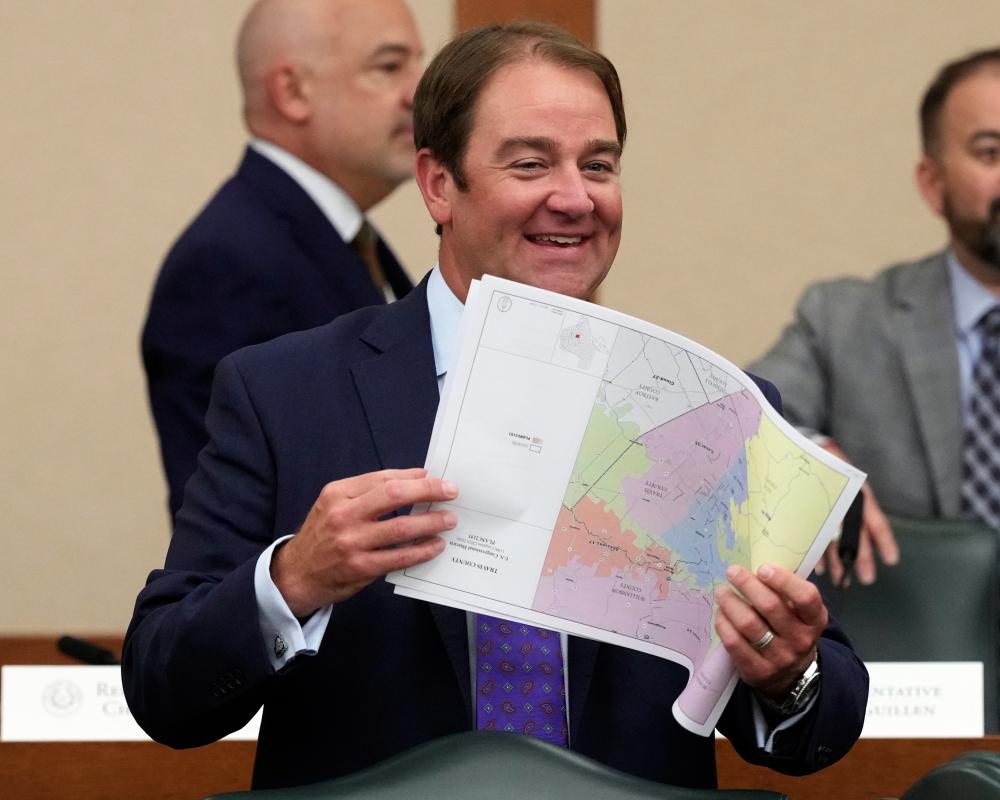default
When Texas Republicans redrew their congressional map this month at the urging of Donald Trump, they faced a difficult task. They needed to find a way to pick up five seats that the president wanted ahead of the midterm elections next year without spreading their voters too thin and jeopardizing the 25 seats they already held.
Republicans unveiled their plan to pick up the seats on Wednesday, revealing a map that could dilute Hispanic voting power. Under the new proposed districts, they would be favored in five new seats, giving them a hold on 30 of Texas’s 38 congressional districts. Had the district been in place for the 2024 election, Trump would have won all 30 by at least 10 points.
Republicans accomplished their goal by shifting district boundaries in three different parts of the state.
In south Texas, they shifted boundaries of congressional districts where Trump performed well in the 2024 elections, but are held by two Democrats, Henry Cuellar and Vicente Gonzalez. Trump won Cuellar’s district by seven points and Gonzalez’s districts by about four points in 2024. Had the proposed districts been in place in 2024, he would have won each by about 10 points.
Related: Texas Republicans unveil congressional map that could gift them five seats
In central Texas, the Dallas-Fort Worth metroplex, and Houston, Republicans eliminated three separate Democratic congressional districts with a similar approach. They packed Democratic voters into one or two districts and then attached the rest to newly drawn, heavily Republican areas.
It’s an aggressive approach that gives Republicans a shot at picking up five seats, but doesn’t necessarily guarantee they will get all five. Analysts believe that Cuellar – who faces federal bribery charges – and Gonzalez, are established enough incumbents that they could win in the new configurations of their districts.
“They didn’t make the newly targeted, or the new seats targeted for pickups, as red as they could have,” said David Wasserman, a well-respected analyst at the Cook Political Report. “Had Republicans drawn an uglier map, they could have basically guaranteed themselves five [seats].”
default
Republicans are redrawing the map amid a four-year legal battle over the districts that are already in place. That suit, filed by a coalition of Latino voting organizations, advocacy groups and voters, argues that Texas’s current congressional map diminishes the influence of non-white voters, who accounted for 95% of the state’s population growth.
“The current map is already egregiously gerrymandered,” said Marina Jenkins, the executive director of the National Democratic Redistricting Committee, which opposes the redraw in Texas. “The proposed new gerrymander, and even more extreme gerrymander, adds even more insult to that injury, Black voters and Latino voters will have even less opportunity to have their political will considered on an equal basis.”
The new map replaces several districts where Hispanic and other non-white voters had been electing Democrats with majority-Hispanic districts that favor Republicans. It would increase the number of districts where white people comprise a majority from 22 to 24, according to an analysis by the Texas Tribune. It would also create an additional Hispanic-majority district, and two new Black-majority districts.
Related: Democrats rally in Texas over Trump order to redraw districts: ‘The only way they can keep power is to cheat’
“The gambit by Republicans here is to actually increase the number of Hispanic majority districts in terms of population share, but to diminish the opportunities of Hispanic voters to elect their candidates of choice,” Wasserman said. “Because there are a number of Hispanic majority districts where Democratic-leaning Hispanic voters will be outnumbered by a coalition of conservative Hispanic voters and white voters.”
Simply adding additional majority-Hispanic districts isn’t enough to evade scrutiny under the Voting Rights Act, said Thomas A Saenz, the president and general counsel of the Mexican American Legal Defense and Educational Fund, which is representing plaintiffs challenging the existing maps. If certain conditions are met, the Voting Rights Act requires states to draw districts that give minority groups the chance to elect their preferred candidates.
“When a line drawer draws majority Latino district but in such a way that it knows will not actually elect the candidates of choice of the Latino community that may be a violation of the Voting Rights Act,” he said, speaking generally about the map. “You can do that by picking areas with large Latino voting population but that historically has a lower voter turnout right others with large Latino population.”
“Pointing to the number of quote unquote majority Latino district does not remotely answer the question of whether you have violated the Voting Rights Act.”

